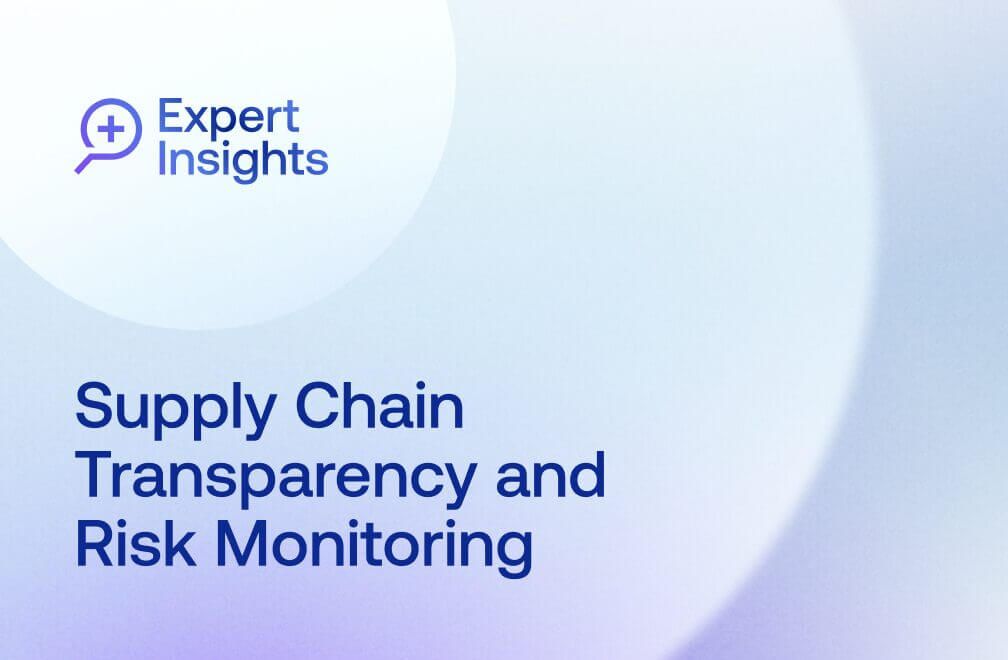
March 29, 2022 • 5 min read
Snowflake’s Amrita Kapoor Unleashes Data to Tell the Real Story
Join Richard Chambers for a new episode of his Agents of Change video series, featuring conversations with internal audit leaders from some of the world’s most prominent organizations about innovation in the profession.
In this episode, Richard sits down with Amrita Kapoor, Head of Internal Audit at Snowflake, to discuss how her team leverages the company’s own cutting-edge data analytics technology to provide insights that drive change in the fast-paced organization, including:
- Use cases where internal audit used Snowflake’s technology to make data more actionable for management.
- Why business acumen and an analytical mindset are required skills for today’s auditors.
- Snowflake’s journey to IPO via empowering the business with data-driven insights to improve processes and proactively identify risk.
Watch the full conversation, and read the can’t-miss highlights below.
How Snowflake’s Internal Audit Team Leverages Their Own Tech to Get Ahead of Risk
Richard Chambers: Amrita, expectations continue to rise for internal audit as risk velocity and risk volatility create a seemingly endless string of surprises for the companies we serve. Are you finding that management and the board in your company are looking more to you and internal audit to help identify emerging trends and avoid surprises?
“Amrita Kapoor: Absolutely. Now more than ever — especially with the explosion of data volume, the variation in data sets and the velocity of data, and the changing business environments — it’s critical for internal audit functions to proactively identify risks and help stakeholders manage them in real time.”
Richard Chambers: I think that’s true — and your company is really a leader in this field of analytics.
“Amrita Kapoor: Yes, Snowflake is a cost-effective, scalable solution that allows you to ingest data from multiple data sources and then monitor for exceptions or insights. We’ve definitely been leveraging Snowflake and monitoring controls in our internal audit function, and it’s gone really well. We’ve automated a couple of use cases with respect to journal entries, segregation of duties, and access management — very relevant to a lot of organizations, and the plan is to continue to expand that and leverage it more.”
Embracing a Change Agent Role Is a Required Skill for Today’s Auditors
Richard Chambers: Those that have navigated the disruptive environment of the past two years and leveraged solutions are the ones who seem to have emerged stronger. One of the things that I think we’ve come to appreciate is that those who are not intimidated by change but embrace it are successful. In the book I wrote last year, I defined agents of change in internal audit as those who are catalysts for transformational ideas that help their organization succeed and to create value. Is being an agent of change in internal audit something that you can identify with?
“Amrita Kapoor: We are always involved in advising management on changing processes, how to make things more efficient, and how to better identify risks. It’s inherent in the profession, but now more so than ever I feel that it’s a required skill — almost something that I want to see in an auditor before I hire them on my team. How can you go and tell management what to change if you yourself cannot be the change and try to see that within your own function?”
Richard Chambers: If we go at our mission with that zeal and enthusiasm for change and the role that we can play, from your experience how have management and the board of your company embraced that idea? Is it something they’re comfortable with?
“Amrita Kapoor: It’s human instinct to be afraid of change, but I think internal audit is in a great spot to drive some of that change in the organization. For us it’s a bit easier because we are a data technology company, so being able to showcase what we’ve done leveraging our own technologies is very well received at the management and board level. But I don’t see why boards and management shouldn’t start expecting this of internal audit functions.”
Snowflake’s Journey to IPO: Empowering the Business with Data-Driven Insights to Improve Processes and Manage Risk
Richard Chambers: Yes, I’ve often spoken about the evolution of internal audit from being purveyors of hindsight to also providing insight, and in the future I think we’re going to have to be able to provide foresight. It’s the kind of technology that you’ve been talking about that’s going to allow us to do that. Let me ask you this: one of the points I make in the book is we’ve got to become more adept at telling our story, making sure that we create awareness about what we can do and the value we can bring because, as I say in the book, a secret agent can’t be a change agent. What have you done in your role to help make sure that internal audit is not a secret agent in the company?
“Amrita Kapoor: As we were embarking on our IPO journey, we noted that there were a lot of manual processes in terms of both performance and testing of controls. We saw this as a great opportunity for us to leverage our own product, bring in data and then use it to provide more valuable insights.”
Business Acumen and Data Proficiency Are Future-Proofing Skills
Richard Chambers: In the book “Agents of Change,” I asked over 600 CAEs what are the attributes that it takes to be a driver of change in internal audit? We synthesized it down to four broad attributes: strong business acumen, a strategic mindset, relationship-centric, and innovative. Do you think those are the right ones? Are there others that you would add?
“Amrita Kapoor: They are absolutely the right ones. I may just emphasize business acumen, because how can you provide perspectives to your stakeholders if you don’t even understand the business model? I think that is super important, and it’s what I look for in folks who join my team.”
You may also like to read


How Uniper achieves greater audit transparency and impact

How Snowflake Uses Continuous Monitoring to Proactively Identify Risk

Enterprise e-commerce company transforms audit planning with Grant Thornton and AuditBoard

How Uniper achieves greater audit transparency and impact

How Snowflake Uses Continuous Monitoring to Proactively Identify Risk
Discover why industry leaders choose AuditBoard
SCHEDULE A DEMO



